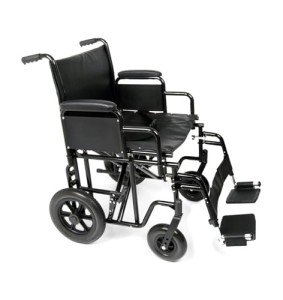Bariatric Transport Wheelchair
Created to be pushed by caretakers, transport chairs include smaller sized front wheels and larger rear wheels. They are a popular choice for users with restricted mobility who can not stroll independently.
When searching for a lightweight bariatric transport wheelchair, think about the user's needs and how they'll utilize the chair. Also, measure any entrances and other areas the chair will travel through.
Seating
Bariatric transport chairs feature a large 22 to 36 inch broad seating location that accommodates extra-large users. The chair seat is made from breathable nylon and comes with padded arms that can be gotten rid of and swing-away footrests. Unlike standard wheelchairs, which are ideal for typical body weights, bariatric chairs have actually much heavier frames constructed from reinforced materials and bigger rear wheels that make it simpler to push them. Talk with a mobility expert to read more about your alternatives and to figure out which kind of wheelchair is ideal for you. bariatric wheelchair scale are frequently covered by insurance providers like Medi-Cal if your medical condition meets their coverage criteria.
Frame
Bariatric transport wheelchairs utilize sturdy frames made from strengthened materials like steel and have wider seats than standard wheelchairs. They are designed for people with higher body weights and can hold an optimum weight capacity of 700 pounds. They likewise have larger rear wheels, which make them simpler for caretakers to press. Bariatric wheelchairs are frequently covered by insurance such as Medi-Cal, depending upon the patient's specific medical requirements and diagnosis. Ask a health care expert or mobility professional to help choose the best chair for your special requirements.
Click here for more info. Medline Bariatric Transport Chair. Deep Red Hammertone Frame.
Weight

While standard wheelchairs have lighter frames and smaller sized wheels, bariatric transport chairs feature heavier-duty materials and a larger seat to accommodate users who weigh more than average. Due to the fact that of their specialized design and building, they tend to cost more than basic chairs. Nevertheless, some insurance coverage programs like Medicare and Medi-Cal may cover the expense of these chairs if the user fulfills the requirements for protection. For more information about which chair is best for you, call a rehabilitation professional today.
Wheels
Bariatric transport wheelchairs have larger rear wheels than standard models, making them simpler to press. They're often used in health centers and home settings, where the chair is pressed by caregivers. The extra-large rear wheels also permit the chairs to browse a variety of terrain, consisting of outdoors.
Basic wheelchairs generally have smaller wheels, which make them more maneuverable indoors however less ideal for daily use on outdoor streets and other surface areas. Mobility experts advise seeking advice from with a healthcare service provider or mobility professional to select the best wheelchair for your specific needs and goals.
This durable, nylon enhanced steel transport chair supports clients as much as 500 pounds and includes a spacious 22" seat, padded desk-length armrests, swing-away footrests and hand brakes. The 12-inch rear wheels make sure a smooth ride in any environment.
